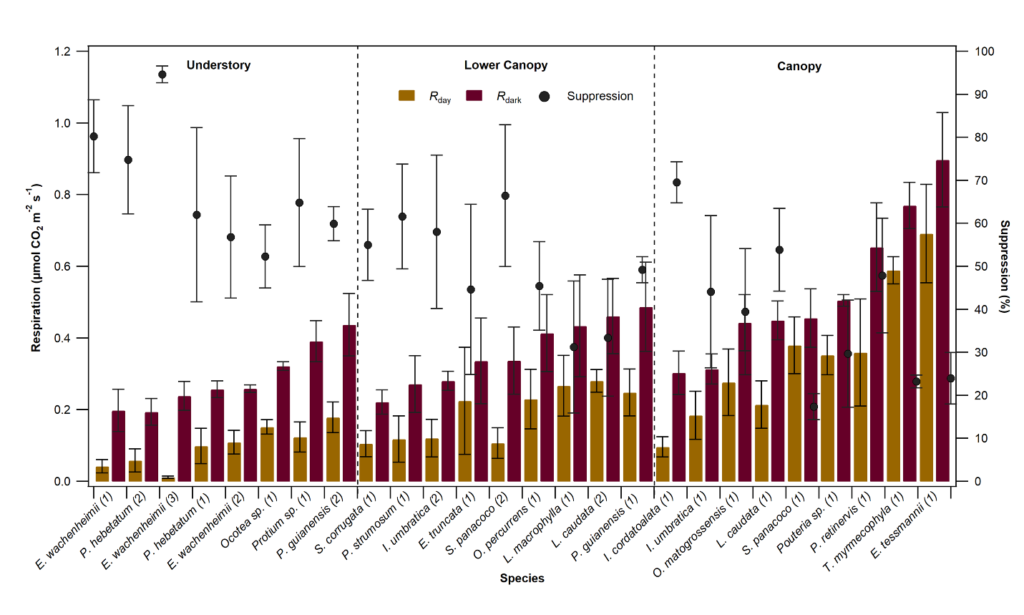Leaf respiration in the Tropics
The Science
Leaf respiration contributes to an estimated 50% of total autotrophic respiration, but with few observations in the tropics, the uncertainty around this component is high. In addition, little is known about how it varies across common tree species as a function of height within the forest and how light influences the respiratory process. In this study, we show that canopy position has an important influence on leaf respiratory rates and the degree of light suppression.
The Impact
This study also provides a better understanding of the carbon cycle, energy metabolism, and the connections with leaf functional traits in different environmental conditions. Our results highlight the importance of representing the light suppression of leaf respiration in dynamic vegetation models aimed at predicting the future of tropical forests under climate change by accounting for environmental and biological vertical gradients within forest canopies and connections with leaf functional traits.
Summary
Leaf respiration is a major contributor to autotrophic respiration but is poorly characterized in diverse tropical ecosystems. Light can inhibit this process, but little information is known about the light suppression of leaf respiration. Due to the great importance of the Amazon rainforest in the global climate context, this study quantified the rates of the day and dark respiration and investigate if the canopy position influences the variation of leaf respiration rates and light suppression. We studied 26 tree individuals of different species distributed in three different canopy positions: canopy, lower canopy, and understory. We found that rates of leaf respiration and light suppression followed an opposite pattern as function of canopy position. Canopy trees had significantly higher rates of Rdark and Rday than trees in the understory. However, the difference between Rdark and Rday (the light suppression of respiration) was greatest in the understory (68 ± 9%, 95% CI) decreasing in the lower canopy (49 ± 9%, 95% CI), and reaching the lowest values in the canopy (37 ± 10%, 95% CI). Our results highlight the importance of including representation of the light suppression of leaf respiration in terrestrial biosphere models and also of accounting for vertical gradients within forest canopies and connections with functional traits.

Contact
Kolby J. Jardine, Lawrence Berkeley National Laboratory, kjjardine@lbl.gov
Funding
This research is based upon work supported as part of the Next Generation Ecosystem Experiments-Tropics (NGEE Tropics) as a part of work package 1.4 (Autotrophic respiration) funded by the U.S. Department of Energy, Office of Science, Office of Biological and Environmental Research’s Terrestrial Ecosystem Science Additional funding for this research was provided by the Brazilian Conselho Nacional de Desenvolvimento Científico e Tecnológico (CNPq).
Publications
C. Souza, et al. “Canopy Position Influences the Degree of Light Suppression of Leaf Respiration in Abundant Tree Genera in the Amazon Forest”. Frontiers in Forests and Global Change 4, 13, (2021). DOI 10.3389/ffgc.2021.723539.
Related Links
https://www.frontiersin.org/articles/10.3389/ffgc.2021.723539/full